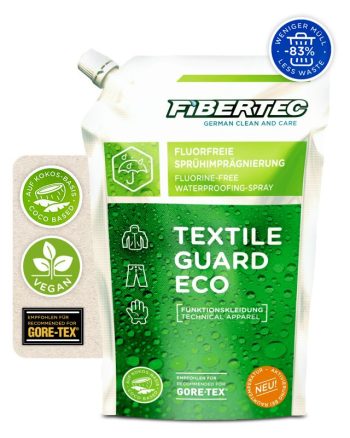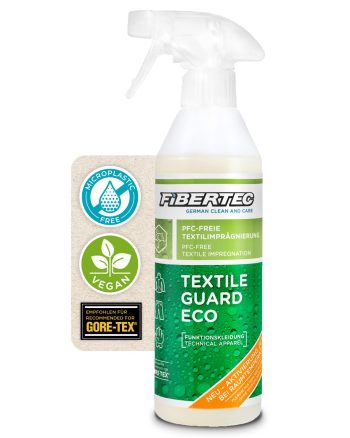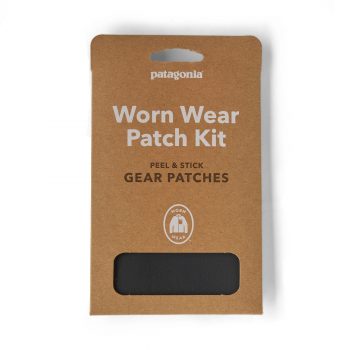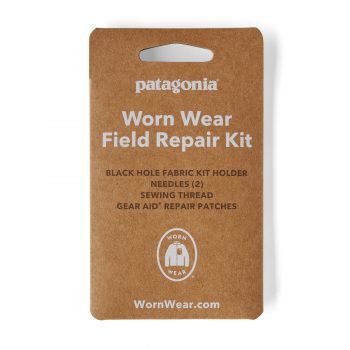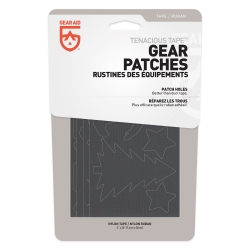Many people may think that they don't dare to wash a shell garment because of the sensitivity of its waterproof membrane. But contrary to what one might think, membrane and surface-treated outdoor clothing should be washed in the same way as other clothes. Good maintenance procedures and washing maintain the function of the membrane's properties and extend the life of the shell garment considerably. In short: the cleaner the film, the better it works.
The waterproofness of the outerwear consists of a film and a water-repellent surface treatment. Probably the name of the film Gore-Tex, but there are others in Camu's selections, such as Patagonian H2No, Norronan DRI1, DRI2 and DRI3, by Black Diamond BD Dry mixed Atmosphere and Pertex Shield. The most famous of the surface treatments is DWR (Durable Water Repellent). Read more about the technical properties of shell clothes and membranes from here.
In the maintenance of membrane clothes, the most important thing is washing with the right detergent mixed renewing the surface treatment from time to time. Fast ventilation refreshes clothes between washes and on longer trips. In addition, minor maintenance procedures such as a broken zipper correction or patching a tear make a valuable shell garment a long-lasting companion.
The waterproofness of the outerwear consists of a film and a water-repellent surface treatment. Probably the name of the film Gore-Tex, but there are others in Camu's selections, such as Patagonian H2No, Norronan DRI1, DRI2 and DRI3, by Black Diamond BD Dry mixed Atmosphere and Pertex Shield. The most famous of the surface treatments is DWR (Durable Water Repellent). Read more about the technical properties of shell clothes and membranes from here.
In the maintenance of membrane clothes, the most important thing is washing with the right detergent mixed renewing the surface treatment from time to time. Fast ventilation refreshes clothes between washes and on longer trips. In addition, minor maintenance procedures such as a broken zipper correction or patching a tear make a valuable shell garment a long-lasting companion.
Why should shell clothing be washed?
Shell clothing is often bought with longevity in mind, and a good shell can easily last ten years if properly maintained. Neglecting to wash, on the other hand, can ruin a valuable shell garment in just a few years.
Human sweat and sebum are particularly harmful to the garment, as they wear out the adhesives in the seams and may dissolve the membrane from the fabric, causing the water resistance to deteriorate. For example, grease, make-up and dirt easily remain on the collar area of the jacket, which clog the material's important pores.
A large part of the membrane clothing complaints made to Camuu are related to contamination. The membrane tears or the seam tapes open, because sweat, grease and dirt have been left in the garment. That's why shell clothing must be washed!
What detergent is used to wash shell clothes?
When washing shell clothes, you should only use a liquid detergent suitable for membrane clothes. For example Fibertec, Grangers, Gearaid Revivex or Arcteryx Nu Care are detergents suitable for shell clothes and are all also biodegradable.
The usual detergents found in Market are made for everyday clothes, which consist of many types of textile fibers, from cotton to synthetic. Such basic detergents contain brighteners, perfumes and other additives, which can remain in the fibers of the garment and thus weaken the function of the waterproof membrane.
Detergents for technical clothes found in markets are generally not suitable for shell clothes, but are intended for jumpers and other technical textiles. You should also not use fabric softeners, bleaches, etc. when washing shell clothes.
We chose a German among Camu's selections Fibertec- brand thanks to its ecological value base and production chain. Fibertec detergents are coconut oil-based and have Gore-Texcertificate, i.e. all major brands have approved the use of the product. In use, we have also noticed that the detergent is more sufficient than competing products.
Camun väki
How to wash shell clothes?
Machine washing is recommended for most shell garments. Individual stains and smaller shell clothing such as gloves can be washed by hand. You shouldn't load the washing machine full, but you can wash several shell clothes at the same time. Dispense the correct detergent according to the instructions on the package.
Read and check the garment's washing instructions at what temperature the garment should be washed. In general, the washing temperature varies between 30 and 40 degrees and the spin is light.
Always close the main zipper of the garment and the zippers of the underarm vents. Leave the pockets open, as the pockets especially collect dirt and grease from the hands. Open any elastic band fastenings on the hood, hem, etc. If the cuffs have, for example, velcro fastenings, fasten the velcro band directly.
Shell clothes dry quickly either on a hanger or on a drying rack. In general, shell clothing can also be spun in a tumble dryer, but not too hot. You can check the temperature of the dryer on the washcloth of the garment.
How often should shell clothing be washed?
Washing intervals are generally determined according to use, but we recommend washing about four times a year, but at least once a season.
For example, Arcteryx recommends washing up to once a month, if the shell is used really hard or if, for example, you sweat a lot. Stain removal and precision washing can always be carried out as needed.
Why should shell clothing be impregnated?
After washing, another important maintenance procedure is renewing the garment's surface treatment, i.e. impregnation. In practice, the film under the textile layers prevents water from entering the garment. The surface fabric, on the other hand, feels cold and damp when it gets wet, even though the water does not penetrate the membrane.
Wetting of the surface fabric is prevented by a special water-repellent treatment, which wears off with time and use. That's why the garment should be saturated every once in a while. Thanks to the impregnation, water drips onto the surface of the fabric and runs off, rather than being absorbed into the fabric. However, impregnation does not need to be performed as often as washing. You can test the need for impregnation, for example, by spraying water on the surface with a spray bottle and see if the surface gets wet or if the water still drips onto the surface.
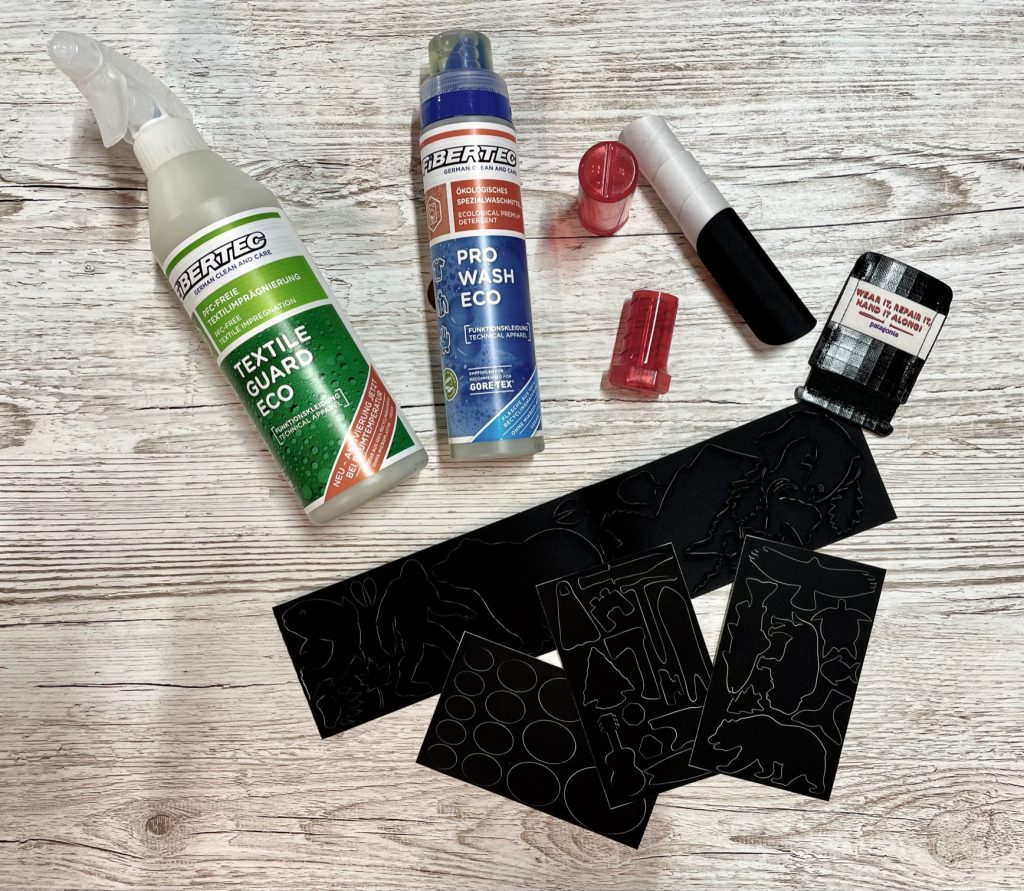
-
Product on saleWorn Wear Patch Kit – korjauspaikkoja19,00€
25,00€ -
Product on saleWorn Wear Field Repair Kit – vaatteiden korjaussarja15,00€
20,00€ -
Gear Patches – korjauspaikka11,00€
-
Repair Tape – korjausteippi9,00€
How to impregnate a shell garment?
Today, it is recommended to use a protective agent in spray form for impregnation. Many brands also have an impregnating agent available for washing, which is used in the same way as fabric softener. But this kind of impregnation also unnecessarily coats the inside of the garment, which hinders the breathability of the garment.
The advantage of the sprayable substance is also that it can be sprayed as a specific treatment on areas that wear out a lot, such as the shoulders or waist of the jacket. So you don't always have to saturate the garment all over. With Fibertec there is an impregnant in a spray bottle in the selection and a refill pack is also available.
Uusi Fibertec RT (Room Temperature) on aiempaa helpompi, mutta yhtä hyvä. Aikaisemman lämpökäsittelyn sijaan uusi RT versio ei tarvitse lämpökäsittelyä. Käsittely on helppoa: Sekoita – Suihkuta – Pyyhi ylimääräiset valumat – Anna kuivua huoneenlämmössä (n. 20 astetta) 12-24 tuntia.
Always check the recommended settings for the dryer and iron on the garment's washcloth, as well as the instructions on the protective agent bottle. At Camu, we are happy to answer questions related to the maintenance of shell clothes and help in choosing the right detergents and protective agents.

